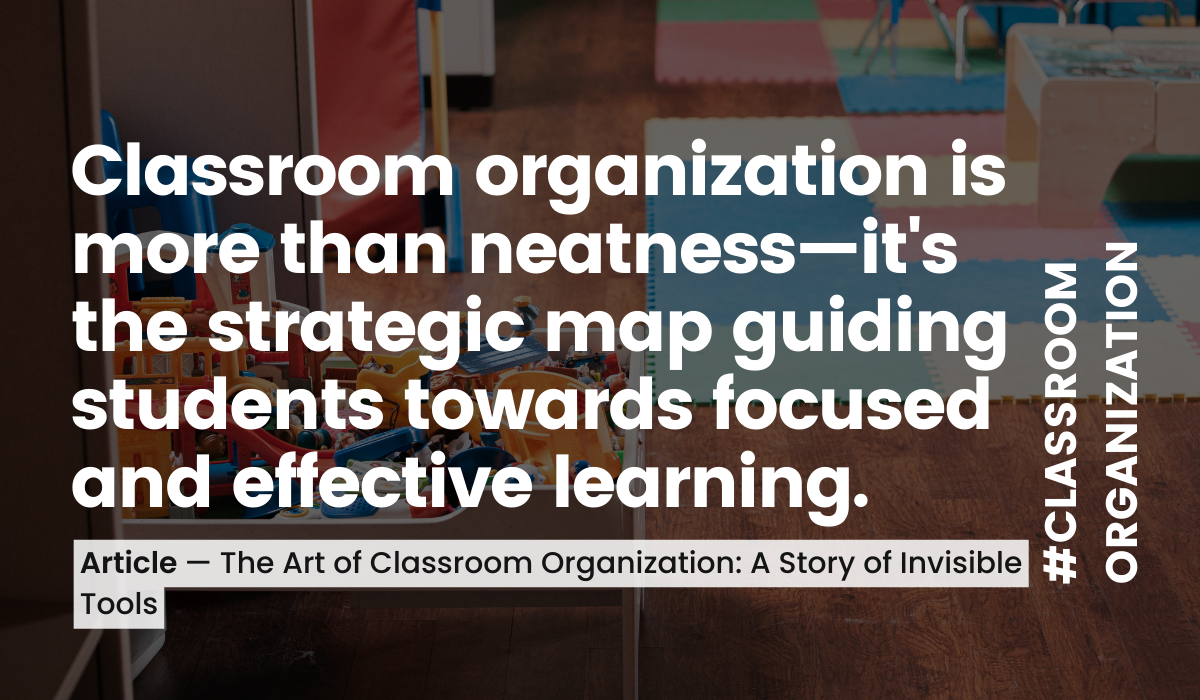The classroom environment serves as a third teacher – silent, yet significant. While the value of engaging lectures and stimulating activities cannot be overstated, there’s another element that plays a crucial role in shaping the learning experience: classroom organization. The arrangement of desks, the categorization of supplies, and the overall orderliness of the space can subtly yet substantially influence teaching and learning processes. It sets the stage for successful instruction, establishes a positive learning atmosphere, and directly impacts students’ academic outcomes.
Summary: In this article, we delve into the critical role classroom organization plays in promoting effective learning. We explore the tangible impact of well-structured classrooms, the subtle yet significant contributions of various organization tools, and how they all interplay to create a more focused, efficient learning environment. From storage solutions to adjustable furniture, these tools, coupled with best organizational practices, not only streamline classroom operations but also foster an atmosphere of discipline and independence among students. Join us as we unpack the value of a well-organized classroom.
Note: This article contains affiliate links to products. If you purchase products through these links, we may earn a commission. As an Amazon Associate, we earn from qualifying purchases.
The Role of Classroom Organization in Effective Learning
Well-organized classrooms are not just aesthetically pleasing; they’re conducive to effective learning. According to a study by the University of Salford, a well-designed classroom can improve learning progress by up to 16%. Key elements of this design include classroom layout, air quality, temperature, and light—but just as importantly, the organization of educational resources.
Neat, well-organized classrooms minimize distractions and create an atmosphere of discipline and focus, helping students to concentrate better on their work. Furthermore, clear systems for the placement and storage of educational materials enhance the smooth flow of lessons, reduce wasted time, and encourage independence and responsibility among students.
Classroom Organization Products and Their Subtle Impact
Classroom organization tools subtly yet significantly contribute to this optimal learning environment. They help maintain order, streamline processes, and facilitate the effective use of time and resources.
For storage, products like the Sterilite Clip Box Clear Storage Tote Containers help keep resources tidy and easily accessible, preventing the chaos of misplaced items.
Label makers, like the Brother P-touch, are invaluable for clearly categorizing and identifying materials, simplifying retrieval during classes.
Book racks such as the ECR4Kids Classroom Bookshelf, and file organizers like the Godery School Pocket Chart, help manage an array of learning resources, from textbooks to student assignments.
Even the furniture layout plays a role in classroom organization. Mobile and adjustable furniture, like the Flash Furniture Adjustable Height Student Desk and Chair, allows teachers to quickly and easily rearrange the classroom layout to accommodate various learning activities, ensuring easy movement and visibility for all students.
Reflecting on the Impact
The benefits of classroom organization tools extend beyond just theories or assumptions. Numerous educators have attested to the positive changes they have experienced after implementing these tools in their teaching environment. Their anecdotes often highlight reduced stress, time savings, and a more focused learning environment – all attributing to the effective use of classroom organization tools. The value of a well-organized classroom is universally recognized as a cornerstone in fostering effective learning.
Best Practices in Classroom Organization
Regardless of the specific tools used, a few general best practices can enhance classroom organization. Firstly, everything in the classroom should have a designated place. Secondly, frequently used items should be easily accessible to those who use them most often. Thirdly, labeling is key—it saves time and promotes independence among students. Lastly, maintaining the organization system should be a shared responsibility between the teacher and students, encouraging teamwork and mutual respect.
Conclusion
Classroom organization goes beyond mere aesthetics; it forms the bedrock of an effective learning environment. And while the organization tools quietly do their work in the background, their impact is profound, fostering a more productive, efficient, and harmonious classroom for both teachers and students.
Call to Action
Teachers, it’s time to revisit your classroom organization strategy! What tools and tactics have you found most effective in maintaining an organized and productive learning environment? We welcome your thoughts, experiences, and insights. Please share with us via email at info@teacherrelated.com. We look forward to learning from your experiences and further enriching our discussion on effective classroom organization.
Reference: Barrett, P., Davies, F., Zhang, Y., & Barrett, L. (2015). Clever Classrooms: Summary report of the HEAD project. University of Salford, Manchester.
